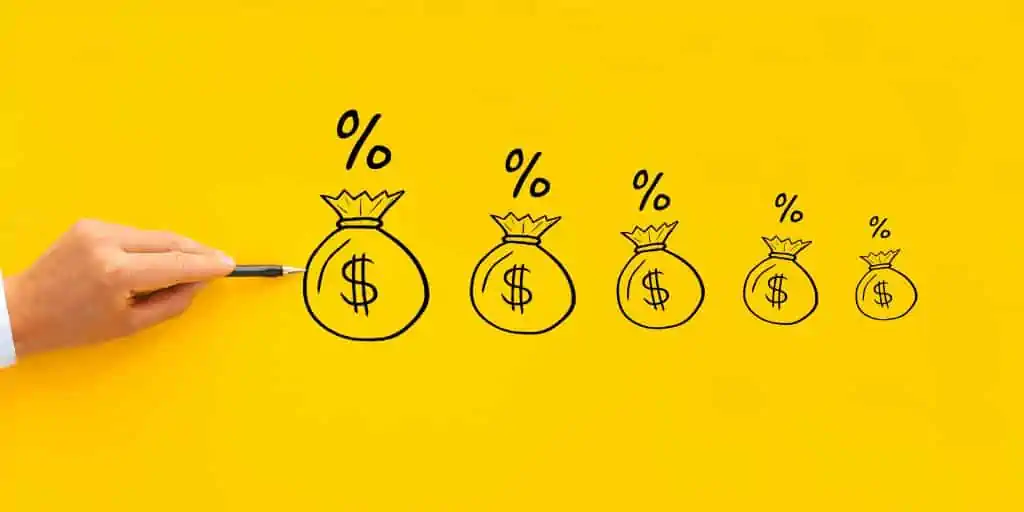What Is the Reversion Cap Rate?
Reversion Cap Rate Explained
Real estate investors use the reversion cap rate as one metric to determine the health and prospects of a deal. Unlike regular cap rate, which estimates the potential return on investment at the start of the agreement, the reversion cap rate measures the property’s profitability at the end of the deal. Hence its other names, exit cap rate or terminal cost[1].
However, investors need to understand how the cap rate and reversion cap rate work to get a clearer picture of a deal’s profitability.
Cap Rate vs. Reversion Cap Rate
The relationship between cap rate and reversion cap rate is that the former is an estimate at the start of the deal, while the latter is an estimate at the exit or end of the deal.
The cap rate (or going-in market cap rate) refers to the capitalization rate at which similar properties sell in the same market. This value is derived by dividing a property’s Net Operating Income (NOI) by its current market value. The going-in market cap rate makes a suitable starting point for establishing pro forma projections over a given period.
To calculate the cap rate, use our cap rate calculator here.
In real estate, pro forma refers to a detailed report of a property’s projected NOI and cash flow projections based on its rental income and operating expenses. It forecasts how income-producing property will likely perform after accounting for certain fluctuations, such as increased rent, reduced tenancy, property upgrades, and management fees.
With the starting point of the analysis firmly established, it is also useful to determine an endpoint for comparison. This is where the reversion cap rate comes in. It is calculated when underwriting the exit sales value of the deal.
The reversion cap rate essentially provides a conservative way to measure the deal’s exit value by increasing the going-in market cap rate by a certain percentage. Most calculations start with an increase of 0.5% or 50 basis points[2]. For example, assuming the going-in market cap rate is 5%, then a reversion cap rate of 5.5% is used when underwriting the exit sales value of the project.
What Factors Influence the Reversion Cap Rate?
Several factors can affect the final value of a property’s reversion cap rate[3]. These include:
- Risk level — The level of risk associated with the property can impact its projected performance over a given period. For instance, if the property is in a flood-prone area, then it is constantly exposed to the risk of flooding, affecting the usability of the property and ultimately, its market value.
- Debt — The amount of debt on the property can determine how much of a profit or loss it will return when calculating the exit value.
- Equity — The amount of equity in the property simply refers to the ownership level by the investor. The higher the equity level, the higher the potential profit and loss the investor is exposed to over that period.
- Project duration — The length of time until the projected exit can influence the exit sales value of the deal.
- Market/economic conditions — The economic conditions at the time of the projected exit are huge factors in calculating the reversion cap rate. This includes things like interest rates, socio-political stability, and so on.
- Type of property — Commercial real estate properties have different uses and will therefore perform differently.
A Practical Example of the Reversion Cap Rate
Assume a going-in market cap rate of 5% and an increase of 0.5% applied to arrive at a reversion cap rate of 5.5%. The expected net operating income (NOI) for the property is $700,000.
To find the starting value, divide the NOI by the going-in market cap rate:
$700,000/0.05 = $14,000,000
To find the exit value, divide the NOI by the reversion cap rate:
$700,000/0.055 = $12,727,273
This represents a decrease in value of $1,272,727 ($14,000,000 – $12,727,273) at the end of the project.
In another instance, assume a 1% difference in cap rates, where the reversion cap rate will be 6%:
$700,000/0.06 = $11,666,667
This represents a decrease in value of $2,333,333 ($14,000,000 – $11,666,667) at the end of the project.
In both instances, the projections are conservative because they estimate that the property will sell at a lower value than its purchase price[4]. This is good for investors because it indicates that the deal makes some sense even if the market turns out to be worse at the end of the project.
Benefits of Using the Reversion Cap Rate
Using the reversion cap rate when underwriting exit sales value can provide some insight to an investor.
For one, it allows for the deal to have some margin of error, which is important because no investment is ever 100% foolproof. By making provisions for potential risks and market downturns, projections are generally more accurate.
When setting up real estate deals, the idea is to undersell and over-deliver, which is why basing numbers on a conservative exit value model is sensible. By underselling the project, investors have a bigger threshold of how much losses they are willing to accept and are therefore unlikely to be too disappointed if the project does not end well. On the other hand, if the project performs well, then it is counted as an even bigger success and everyone is happy.
Lastly, investors can use the reversion cap rate when assessing a property’s risk profile by looking at the previous cap rates for similar commercial properties in that area. This way, they can get an idea of the property’s resale value.
Limitations of the Reversion Cap Rate
The reversion cap rate is not an all-encompassing tool. While it provides valuable insight into projected performance by adding a 0.5% to 1% increase in cap rate, it cannot account for other types of risks that real estate deals are exposed to.
For instance, real estate projects are typically not immune to significant macro-economical events, such as health pandemics or political instability. Even with a conservative approach, there is no amount of underselling that may fully capture the magnitude of the volatility that the market will suffer.
Takeaways
- The reversion cap rate is the capitalization rate of commercial property at sale. Investors use it as a metric (among other tools) to get an idea of their potential return on investment.
- The reversion cap rate is calculated by adding a certain percentage (usually 0.5% or 1%) increase to the current cap rate.
- Reversion cap rates are based on a conservative model to accommodate possible changes to the property value when the market dips. These dips are influenced by several factors, including the property’s risk level and type, debt, equity level, and economic conditions at the time of sale.
Sources
- First National Realty Partners. (2021.) Entry Cap Rate vs. Exit Cap Rate – Why Assumptions Matter. Retrieved from https://fnrpusa.com/blog/entry-cap-rate-vs-exit-cap-rate-why-assumptions-matter/
- Disrupt Equity Partners. (2022.) Reversion Cap Rate: Why This Term Is So Valuable When Evaluating a Deal. Retrieved from https://www.disruptequity.com/reversion-cap-rate-why-this-term-is-so-valuable-when-evaluating-a-deal/
- Di Cerbo, D. (2022.) Reversion Cap Rate: A Tool For Underwriting Exit Sales Value. Willowdale Equity. Retrieved from https://willowdaleequity.com/blog/reversion-cap-rate-a-tool-for-underwriting-exit-sales-value/
- Goodegg Investments. (n.d.) What Are Cap Rates For Commercial Real Estate, And What Do Passive Investors Need To Know? Retrieved from https://goodegginvestments.com/blog/commercial-real-estate-cap-rates/








